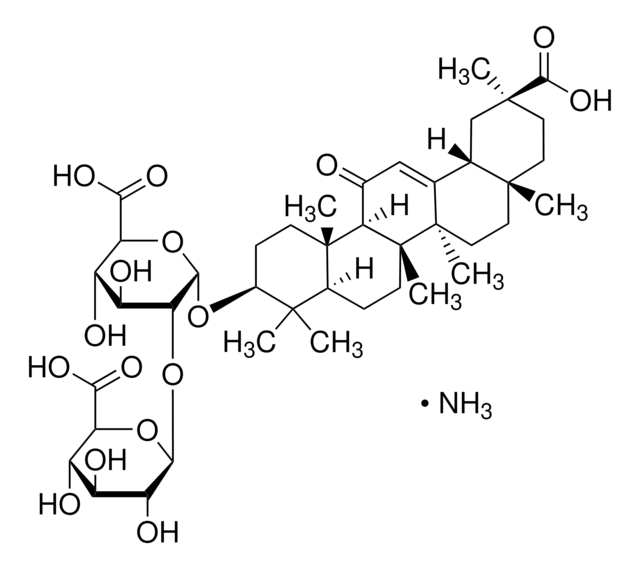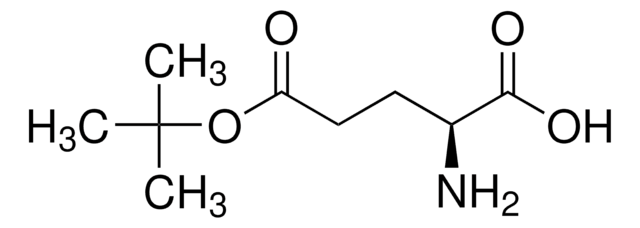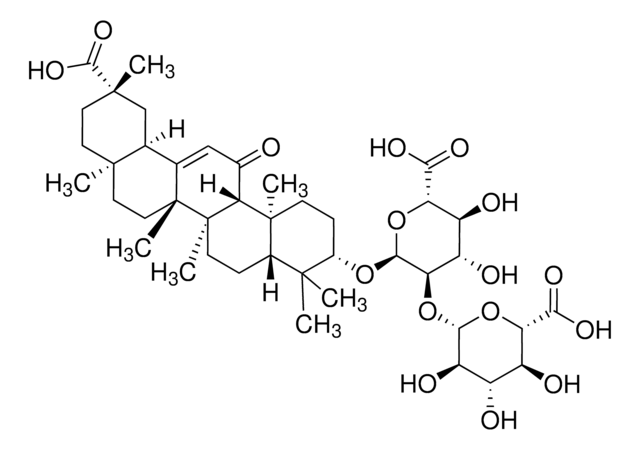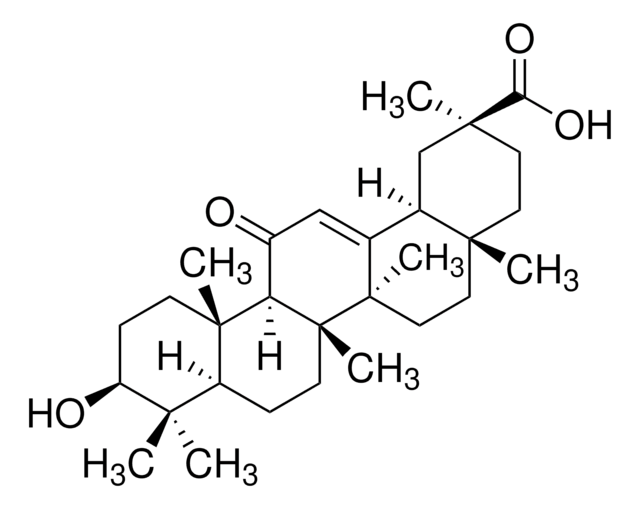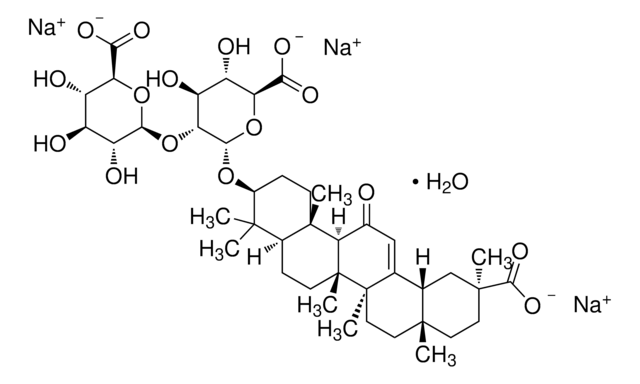50531
Glycyrrhizic acid ammonium salt from glycyrrhiza root (licorice)
≥95.0% (NT)
Synonym(s):
3-O-(2-O-β-D-Glucopyranuronosyl-α-D-glucopyranuronosyl)-18β-glycyrrhetinic acid ammonium salt, Glycyrrhizin
About This Item
Recommended Products
Quality Level
Assay
≥95.0% (NT)
optical activity
[α]20/D +48±4°, c = 1% in ethanol: water (1:1)
sweetness
50 × sucrose
impurities
≤7% water
SMILES string
N.CC1(C)[C@H](CC[C@@]2(C)[C@H]1CC[C@]3(C)[C@@H]2C(=O)C=C4[C@@H]5C[C@](C)(CC[C@]5(C)CC[C@@]34C)C(O)=O)O[C@H]6O[C@@H]([C@@H](O)[C@H](O)[C@H]6O[C@@H]7O[C@@H]([C@@H](O)[C@H](O)[C@H]7O)C(O)=O)C(O)=O
InChI
1S/C42H62O16.H3N/c1-37(2)21-8-11-42(7)31(20(43)16-18-19-17-39(4,36(53)54)13-12-38(19,3)14-15-41(18,42)6)40(21,5)10-9-22(37)55-35-30(26(47)25(46)29(57-35)33(51)52)58-34-27(48)23(44)24(45)28(56-34)32(49)50;/h16,19,21-31,34-35,44-48H,8-15,17H2,1-7H3,(H,49,50)(H,51,52)(H,53,54);1H3/t19-,21-,22-,23-,24-,25-,26-,27+,28-,29-,30+,31+,34-,35-,38+,39-,40-,41+,42+;/m0./s1
InChI key
ILRKKHJEINIICQ-OOFFSTKBSA-N
Looking for similar products? Visit Product Comparison Guide
Biochem/physiol Actions
Signal Word
Warning
Hazard Statements
Precautionary Statements
Hazard Classifications
Eye Irrit. 2
Storage Class Code
11 - Combustible Solids
WGK
WGK 3
Flash Point(F)
Not applicable
Flash Point(C)
Not applicable
Personal Protective Equipment
Choose from one of the most recent versions:
Already Own This Product?
Find documentation for the products that you have recently purchased in the Document Library.
Customers Also Viewed
Our team of scientists has experience in all areas of research including Life Science, Material Science, Chemical Synthesis, Chromatography, Analytical and many others.
Contact Technical Service
